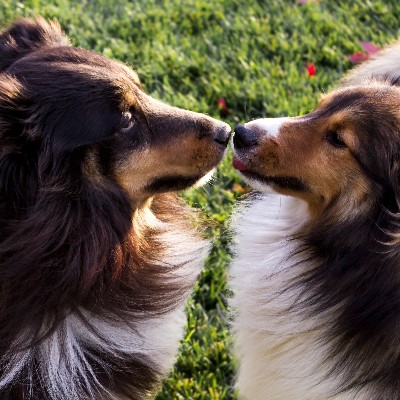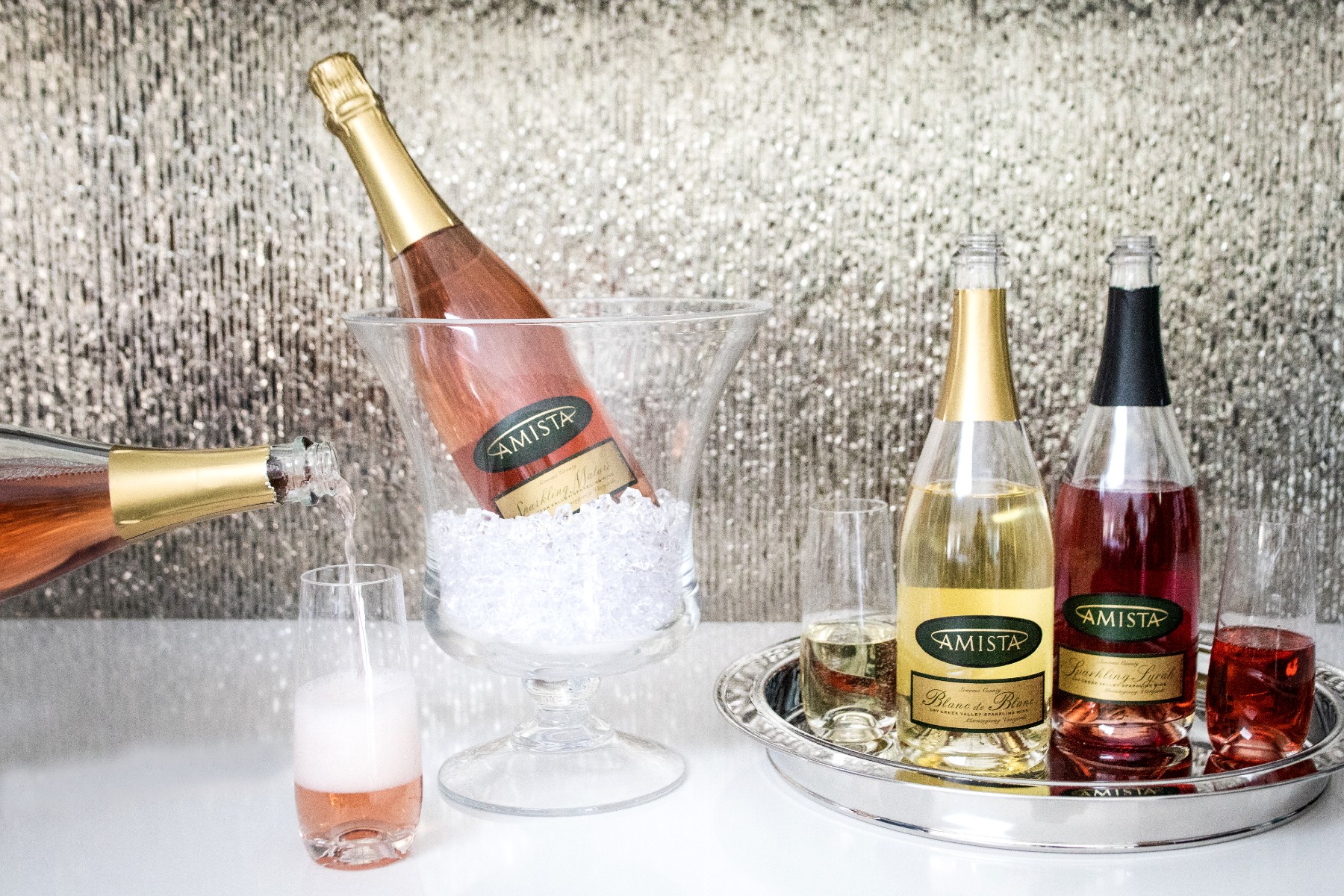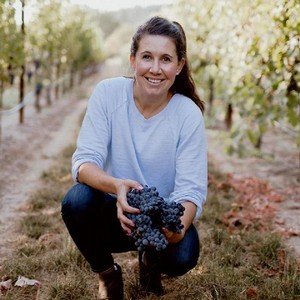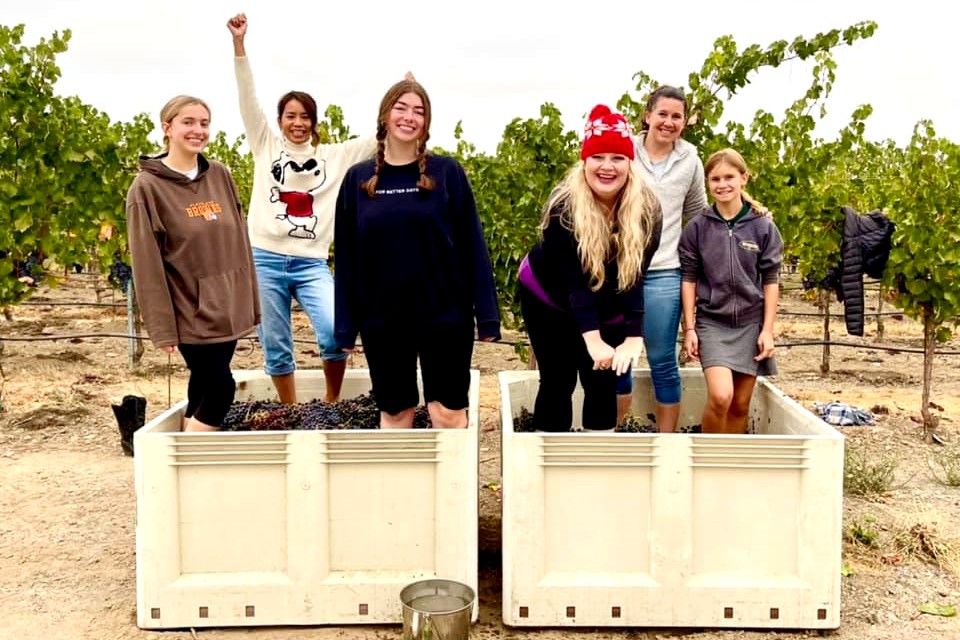News from Amista Vineyards
Meet the Winery Dogs of Amista Vineyards
” Wagging tales and welcoming kisses, canines are often the official greeters and run the show at local vineyards and tasting rooms. Here is a glimpse into a few local wineries serving world-class wine with a side of canine accompaniment,” writes Mallorie Kerrigan-Deming in NORTHBAY Biz Magazine.
Amista means “making friends” in Spanish, and we love to welcome our guests and their friendly canines. We adore our Shetland Sheepdogs, and they delight in meeting the dogs visiting "their winery".
We serve bowls of water and dog treats, so visiting dogs can enjoy the equivalent of a wine and food pairing. We also have a self-guided vineyard walk with stops throughout the vineyard that is perfect for wine lovers and their canines who want to get out into the fresh air and enjoy nature. Our guests tell us we are one of the best dog friendly wineries.
Here is an excerpt from the article featuring Amista in wine dogs of the north bay: “The Farrow’s take pride in creating a home-away-from-home feel when visiting their facility, with the added benefit of borrowing their dog for the additional warm and fuzzy feeling. “Guests can sit on our solar-paneled patio or under the Mulberry tree,” says Vicky. “They’ll be surrounded by vineyards and can relax and enjoy the day with friends. We want you to feel like it’s your home away from home, and you can even borrow our dogs!”
Read about all the cool winery dogs in “Must Love Dogs: Wine Dogs of the North Bay”.
What’s the Difference Between Champagne and Sparkling Wine?
Only the region where it’s made!
That’s why we call our Amista bubbles “sparkling wines” and not Champagne.

If your bubbles are not made in the Champagne region of France, you cannot call them Champagne. It’s a regulatory distinction, not a difference in grapes or the method used to produce the wine.
The method used in Champagne is called Methode Champenoise or Méthode Traditionnelle. We use the same method at Amista and that’s what makes sparkling wines extra special! Still wines go through fermentation only once and are then aged in tanks or barrels. Sparkling wines go through an extra fermentation - producing the delicate bubbles - and are aged in their own bottle.
Although we use the traditional method for crafting our Amista sparkling wines, winemaker Ashley Herzberg and I love to use non-traditional grapes. The classic grapes used in Champagne are Chardonnay, Pinot Noir and Pinot Meunier. Since we specialize in red Rhône varieties, we make Rhône sparkling wines. Each one has turned out to be a pleasant and delicious surprise.
Note: Today is International Champagne Day so let’s raise a glass to friendship. You can read more about "The Difference Between Champagne and Sparkling Wines" in Food and Wine.
Why A Blog?
As a woman winery owner, I have been asked lots of questions about what it’s like to be in the wine business and live the wine country life after spending decades in the corporate world. Here are my stories about the wonderful world of sparkling wines – which I love – and owning a vineyard in Dry Creek Valley. I am grateful I get to live near the charming town of Healdsburg, California, in the heart of Sonoma Wine Country. As with any endeavor, there are glorious moments and difficult moments. For me, each of them brings new discoveries and learning, which is why I call them “sparkling moments”.
About Me
I started with an education in psychology - pretty much useless for getting a job - which led me to explore breakthrough leadership and a career as an executive in several global corporations. Following my corporate career, I became an executive coach helping CEOs and their teams build the leadership skills they need to achieve top performance.
Getting into the wine business wasn’t exactly a plan. As I look back, I believe it was a dream that my husband Mike and I didn’t know we had and didn’t know we shared. When we started out together, we never knew we'd end up living in Sonoma's beautiful Dry Creek Valley surrounded by our own vineyards. From planting our first vineyard in Silicon Valley, to tasting our first “garage-made” wine out of the barrel with friends in our basement in New Jersey, to eventually moving to this beautiful property in the Dry Creek Valley, the creation of our winery, Amista Vineyards, unfolded over many years and in several locations.
Owning a winery has catapulted me into a leadership role that is both challenging and exhilarating. I love crafting our business strategy, meeting our guests, and nurturing the growth and development of our team. I also love living the wine country life – farm fresh foods, beautiful wines, good friends – all in a stunning setting surrounded by vineyards and rolling hills.
About Amista Vineyards
We are dedicated to crafting distinctive wines that inspire you to celebrate the special moments in life and experience the friendly spirit of wine country living. We are proud to produce the best sparkling wine and Rhône varietals in Sonoma wine country, the perfect collection of wines for making everyday moments special and special moments extraordinary.
We are Michael and Vicky Farrow, co-founders of Amista Vineyards. Since we released our first wine in 2005, our goal has been to provide an exceptional wine country experience of Sonoma County's Dry Creek Valley. It is a dream come true to live in this special place and we’re excited to share it with you. We will remain small, and family operated, offering our wines through a personal connection with each guest, whether in person or on-line.
We are local. Our grapes come from our estate vineyards just outside the charming town of Healdsburg, California, and from our neighbors in Dry Creek Valley and Rockpile. We want to be able to walk the vineyards, taste the fruit and have a personal relationship with the people who grow our grapes.
We are sustainable. In August of 2018, our estate Morningsong Vineyards became Certified Sustainable by the California Sustainable Winegrowing Alliance. This certification is only one part of our commitment to our land and people. We were part of project to restore the incredible beauty of Dry Creek and at the same time recreate a vibrant habitat for endangered Steelhead trout and Coho salmon. We built our tasting room with energy efficient insulated concrete forms (ICF's) and constructed a solar structure that powers the tasting room and vineyard irrigation. We believe a vital part of our business is to provide extraordinary learning experiences to people on our team who aspire to be leaders and innovators in the wine business and to impact others in lasting and significant ways.
We are friendly. Amista, loosely translated, means making friends in Spanish and we want your experience to be welcoming, engaging and fun. If you visit us in person, you can look forward to a friendly welcome in a beautiful setting surrounded by vineyards. We are also known as the best dog friendly winery in Healdsburg, California.
Amista Winemaker Ashley Herzberg Tells Why She Loves to Harvest for Sparkling Wines
"Thank you, Mother Nature, for giving me something to look forward to and dream about every year," declares Amista winemaker Ashley Herzberg. Sonoma Magazine asked Sonoma winemakers to share their favorite wine story. Ashley’s favorite story is about the harvest and especially harvesting for sparkling wines. She reveals why she finds it so much fun.
“I love harvest season—and so do my kids! As a sparkling wine producer in Dry Creek Valley, we pick grapes for our sparkling wines earlier than those for still wines at Amista Vineyards. School hasn’t started, camp is wrapping up and my kids adore getting out of the house and into nature. I love being out on these early mornings, hot tea in hand, watching them get as excited as I do. Being able to share my excitement with them is one of the most wonderful aspects of winemaking,” says Ashley.
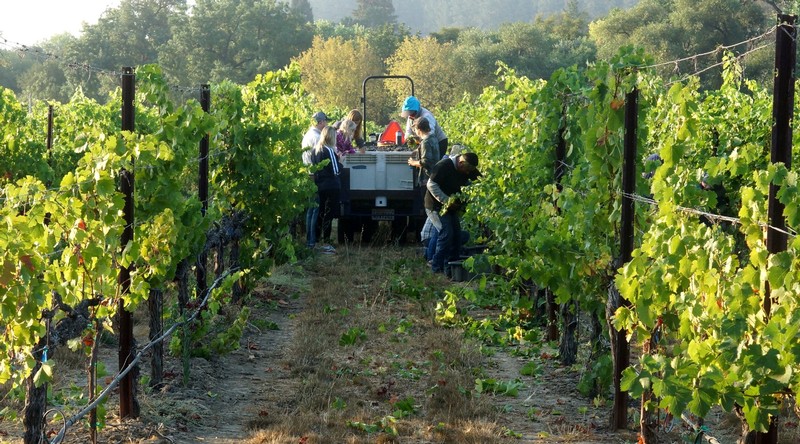
Ashley talks about how her kids grew up in the vineyards. “Having been the winemaker for Amista Vineyards for 10 years now, my daughter and son have grown up walking the rows of Morningsong Vineyards, owned by Proprietors Mike and Vicky Farrow. My kids have toddled through the vines for years, searching for the ripest grapes. They’ve grown to learn how to use a refractometer to take more professional samples as both they and the vines have matured.
I love watching them sample grapes, help with leaf sorting, and experience the early mornings, the chill in the air bundled up until the work and sunrise warm them and sweatshirts are shed. It’s such a unique way to grow up. I hope these opportunities instill a sense of respect for the land, for growing and harvesting a crop and then transforming it into something others can enjoy.”
Read Ashley's story and those of other notable Sonoma County winemakers by Karen Hart In NorthBay Biz. the "Wine Stories".
More About Ashley Herzberg, in Her Own Words
I got a degree in Chemical Engineering from the University of Nevada, Reno in 2006. In May 2006, I moved to Sonoma County to work a wine harvest at Owl Ridge, a winery custom crush facility, as a lab technician, eventually becoming lab manager. In July 2007 I moved to Mauritson Winery in Dry Creek Valley as the Enologist, and then Assistant Winemaker. After nearly four years at Mauritson I decided to strike out on my own. I started as the winemaker for Amista Vineyards in January 2011.
I fell into the wine industry in a roundabout way. My mom and dad love to cook and make dinner together and wine was always on our table. I like how wine brings people together, but I never thought it would eventually be my career. In college, I decided to study Chemical Engineering, thinking that would be a good degree to prepare me for medical school, which had always been my plan. During college, I worked in a hospital doing wound care and working with patients in the physical therapy department, and although I loved it, I realized being inside a hospital was not where I was meant to be.
After graduating, I decided to work a harvest in Sonoma County just for fun before I returned to graduate school. I started work at a custom crush winery in Sebastopol called Owl Ridge. By day two, I knew I was in love with this work and would never go back! I have loved harvest since that very first year.
As a custom crush facility Owl Ridge made wines for over 40 clients, which gave me the opportunity to see a variety of styles and approaches to winemaking. I was fortunate to work with and be mentored by some of the top vintners in California such as Merry Edwards, Greg Lafollette, Anthony Austin, and Scot Covington.
By mid-2007, I was offered an opportunity at Mauritson Wines in Dry Creek Valley as Enologist and soon was named Assistant Winemaker. In addition to making its own wines, Mauritson also does custom crush, so I was again able to work with several winemakers and make a wide variety of wines.
In 2011, after four years there, I had my daughter and decided I was ready to take the leap into consulting. I joined Amista Vineyards in January 2011. When I first started, we were making Chardonnay, Syrah, Cabernet, Zinfandel, and a Sparkling Syrah. I love sparkling wines and was excited to have the opportunity to make them. We have decided to specialize in Rhône varieties and sparkling wines made from our estate Morningsong Vineyards.
Over the years we have expanded our collection of sparkling wines., all made in the classic Methode Champenoise which is used to make fine French Champagnes. Although we use the traditional method for crafting our Amista sparkling wines, I love to use non-traditional grapes. The classic grapes used in Champagne are Chardonnay, Pinot Noir and Pinot Meunier. Since we specialize in red Rhône varieties, we make several Rhône sparkling wines. Each one has turned out to be a pleasant and delicious surprise.
Wine is more than a job for me, it’s a lifestyle. My two children spend lots of time wandering the vineyards and sampling with me. They have become quite adept at determining when a block is ready to pick. And they love to get up at dawn and help with the harvest. I can’t imagine doing anything else with my life - getting to do what I love and sharing that love with my children.
I also enjoy traveling and visiting wineries in other regions around the world in my (limited) free time. I am an avid gardener and created the first Amista Vineyards Winemaker Garden in 2021. Plus I love to cook, ski, and spend lots of time outdoors.
Sparkling Wine Harvest – The Best of Times at Amista Vineyards
It can also be a challenging time
This harvest turned out to be one of the best!

Since we first started visiting wine country, I have always loved harvest. It’s an exciting time of year. There’s a palpable energy in the air with tractors rolling down the roads pulling containers loaded with grapes, empty harvest bins rumbling like thunder across the valley and the aromas of fermenting grapes wafting on the breeze. Add warm, sunny days with bright blue skies and crisp nights with a sky full of stars - what’s not to love?
In 2008 we made our first sparkling wine at Amista Vineyards, a Sparkling Rosé of Syrah, from two barrels that we turned from still wine to sparkling wine using the classic Methode Champenoise. In 2009, we harvested some of our Syrah grapes early to purposely make a sparkling wine. That’s the year harvest went from exciting to sparkling for me.
Grapes for sparkling wines are harvested early to ensure a lower alcohol level because of the secondary fermentation that sparkling wine undergoes in the bottle. If the alcohol is too high the yeast does not ferment in the bottle - the alcohol kills it. And it’s that reaction of the sugar and the yeast that creates the bubbles in a sparkling wine. Harvest was already my favorite time of year and starting harvest early for sparkling wines made it even better!
During the last several years, harvest has been more challenging in Dry Creek Valley, although we don’t like to talk about it because wine people are an optimistic bunch. In 2017 we had the Tubbs fire that destroyed hundreds of homes, filled the skies with smoke, and shut down our tasting room for power outages and evacuations. Over the next two years we had more fires and evacuations. In 2020 we had the dual impacts of COVID and wildfires in the hills just west of us that brought days of shutdowns, smoke, and evacuations.
Fortunately, the 2020 fire started after the grapes for all our sparkling wines and Chardonnay had been picked. But the red grapes had yet to be harvested and we were worried about the possibility of smoke taint because grapes for red wines spend time fermenting on the skins. The skin contact increases the possibility of taint. How could we make wine from red grapes without any skin contact? The answer was a Rosé because the juice is pressed off immediately and doesn’t stay on the skins.
As the smoke rose over the hills behind us, we stood in the vineyards with winemaker Ashley Herzberg and made the decision to pick Grenache for our first Rosé of Grenache. It turned out to be a sensational wine! As has been the case so many times during our wine journey, adversity made us more nimble, more flexible, and more creative.
Despite the challenges of the last several years, our club members and customers supported us every step of the way – reaching out to see if we were all OK and remaining in our club and buying wine over the internet when they couldn’t visit us in person. And our team stuck with us, supporting each other, working in new ways, and gathering for a virtual weekly wine tasting during the shutdown so we could stay connected. It was heartwarming. The challenges have also made us more grateful.
One thing that endures is the excitement we feel with every harvest. There’s something deeply gratifying about partnering with, and sometimes overcoming, Mother Nature to bring in another crop. And we’re always doing something new that is invigorating. This year we foot treaded the grapes that go into our Sparkling Tres, a blend of Grenache, Syrah and Mourvèdre.
We also stomped Grenache for our Rosé of Grenache - in the vineyard! Everyone pitched in - our winemaker, Ashley Herzberg and her kids, our team, and our club members! And most exciting of all, we are fermenting some of our estate Chardonnay in a brand-new concrete egg – an Oeuf de Beaune – so we can add another style to our Chardonnay offerings. We tasted a sample today and we can’t wait to release this wine!
As with any endeavor, there are glorious moments and difficult moments. For me, each of them brings new discoveries and learning, which is why I call them “sparkling moments”. Harvest will always be a sparkling moment!
